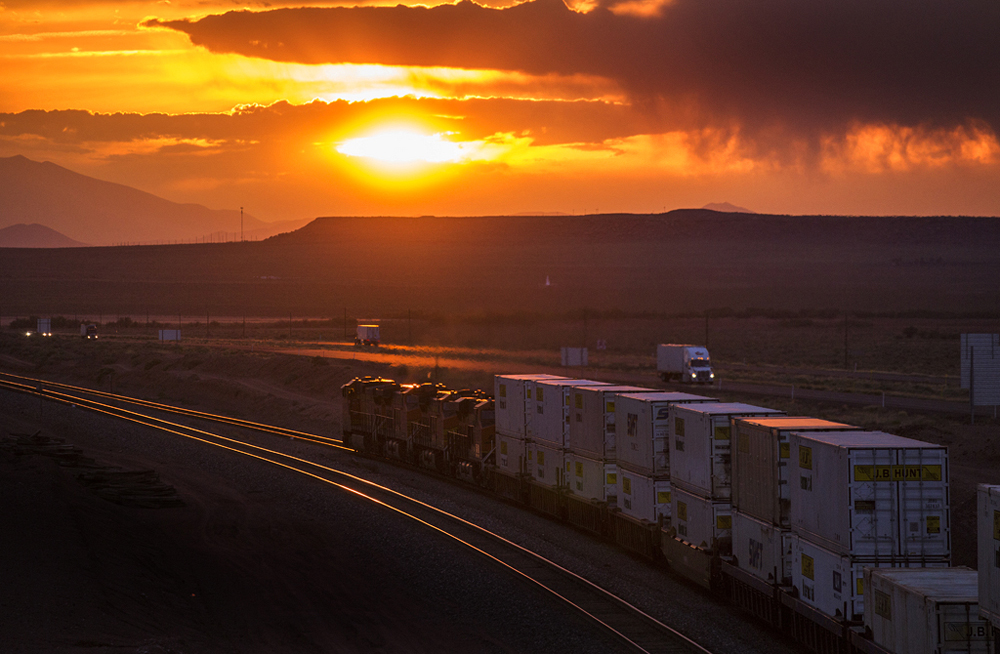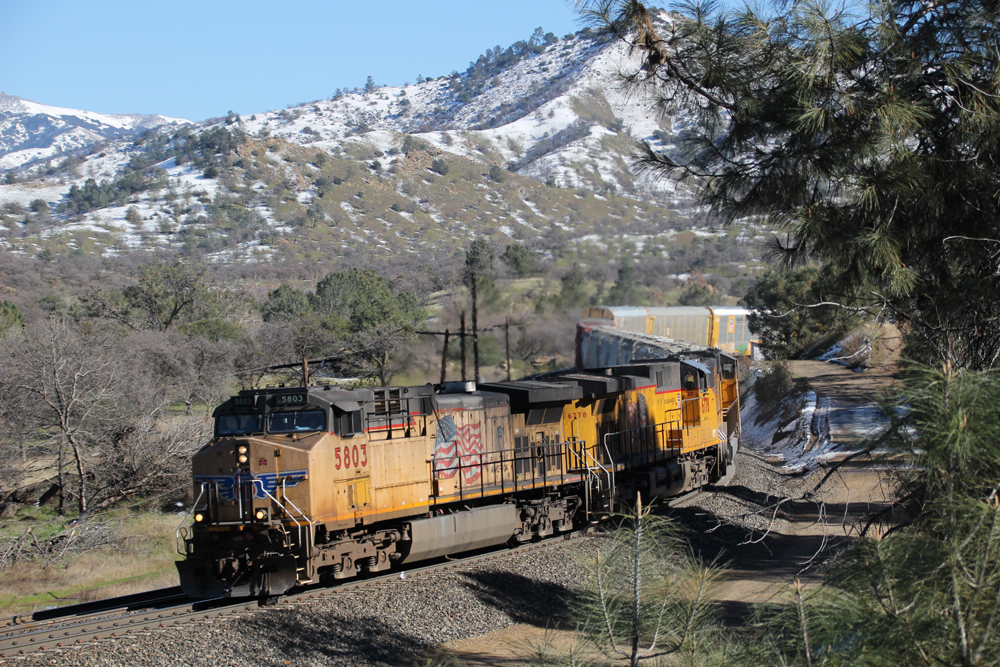
CHARLESTON, W.Va. — With diesel fuel prices for trucks twice as high as a year ago, railroads may have an opportunity to benefit from truck-to-rail shipping conversions. Truckers, struggling to preserve operating margins, are adding fuel surcharges or renegotiated rates, prompting shippers to price rail alternatives in search of cost savings and better reliability. Truck hauls with already delicate margins are particularly threatened on lanes where truckers’ ability to renegotiate rates is difficult.
This latest obstacle is a particular hindrance for small and midsize owner-operators, with some recent reports suggesting that high fuel prices could lead some truckers to leave the business, pushing shippers to rail in some markets. In other cases where truckers’ pricing control allows them to implement fuel surcharges, updated all-in rates are becoming more competitive with rail, increasing the possibility customers will migrate their loads to freight cars.
Fuel surcharges can add a few dollars to a truckers’ base per-mile rate, exposing shippers to noticeably higher costs. It typically takes three or four truck loads to equal one railcar for most commodities.
As of April 16, highway diesel fuel prices are $5.07 per gallon and have been above $5 since mid-March, receding only slightly from March 14’s peak of $5.25 per gallon.
These fuel prices haven’t caused shippers to shift to railroads overnight, nor was that the expectation. But if prices remain high, railroads may become more attractive, helping lift rail volumes that continue to trail year-over-year numbers. The Association of American Railroads’ weekly railcar report for April 9 notes that freight carloads are up 2.5% year-over-year, but total volume including intermodal traffic is down more than 2% from a year ago. Intermodal volume is still down more than 6% year-over-year, driven by persistent supply chain woes and a trucking backlog that was beginning to correct itself as diesel prices surged.
Fuel prices are pinching truckers at the same time some analysts see waning freight demand due to decreased consumer sentiment during a time of high inflation. A recent Wall Street Journal article reports freight rates are pulling back from historic highs and decreased shipping demand appears to be balancing with available capacity. This could signal the end of a profitable run for trucking companies in the wake of the coronavirus pandemic.
Quarterly financials reports will roll out in the coming weeks, providing clarity on fuel’s impact on earnings. If prices remain high, freight customers may explore how to mitigate their exposure to higher fuel costs, making a compelling argument for rail, especially for bulk commodities. This could be a real opportunity for railroads to creatively price business and convert volume.
Chase Gunnoe works in marketing & sales for the freight rail industry and is the author of Carload Considerations, a monthly Trains News Wire commentary series. It discusses the freight rail industry, commodities, and economic trends. Its views are the sold opinion of its author with no particular emphasis on a specific railroad or shipper.














Well, at least there’s a gorgeous sunset in the photo…
For years I have been hearing about truck driver shortages, high fuel costs, But around Michigan there are more trucks on the road than before Covid. The Ambassador bridge between Detroit and Windsor is jamed with trucks. And the railroads, just poking along. They do not want any more business. I noticed today that NS Oakwood yard in Melvindale, MI is mostly empty.
When there was a trucker blocade in Windsor it was a great chance for CP or CN to move cargo stuck at the border if for no other reason than to get noticed and maybe generate some long term business but nope.
I think implied in this article is that there is a subset of truck moves that are price sensitive enough and service insensitive that when fuel prices increase rail can capture some portion of that (assuming rail can keep its fuel surcharges lower).
So if that is the case, other than what has been accomplished with PSR, what is rail doing to capture/retain traffic when fuel prices move back the other way? Or is this simply a play that exists for short bursts every few years when oil prices spike?
And like the tragic opera that is railroading, they will be caught (once again) with their pants down, unable to provide enough crews or locomotives for even a tiny uptick in traffic. [banghead]
Been there seen that, refuse to buy the T-shirt.
Michael, you couldn’t buy the T-shirt even if you wanted to: the T-shirt shipment is stuck in an intermodal container that has been stacked in some Class-I’s yard for weeks (assuming it’s not still bobbing around on a cargo ship that can’t get to the port to unload).
Fuel suecharges are nothing new. When I was in business my fuel surcharge was roughly 6% on top of the rate.
surcharges
Thank Casey Jones that the rail carriers have prepared for this opportunity to beat the bushes and have a laser focus to capture and retain this business. Local sales offices, plenty of capacity and seasoned, motivated crews at the ready. Flexible dispatching options, strong and nimble team leaders. Combine all these factors with amazing, direct intermodal and carload marketing pros to explain the quality, value and service options rail offers at a moment like this.
Yes, Michael, exactly right. Your analysis is spot on! When it stops snowing here in Wisconsin, I think I’ll get out and about and see all those torn-up rail spurs to local industry being replaced. Instead of three mile long container ships on Canadian Pacific I’m going to watch local freights peddling carloads of groceries and other merchandise. Just I have watched local shippers switch to truck one by one over the years, now I’ll see them going back to boxcars.
I will drive to Milwaukee to Miller Brewing which has been 100% truck for outgoing product for the last ten or fifteen years, shifting back to the rails for canstock beer. When I drive home I will witness a noticeable drop in the count of semis on IH 94.
Oh, and I’ll force myself to drop by UPRR Butler Yard, a place I try to avoid. There I will see the strings of laid up locomotives (that UPRR says it doesn’t have) returning to service.
You’re being Ironic, aren’t you? The shades of E. Hunter Harrison (is he related to that other Hunter not the one the tower’s named after?) stands ready to shoo away any business! Run fewer, slower, longer trains in a nutshell!
Oh boy! More reason for railroad management to cry the blues (in the service spectrum) as they run full-steam ahead into oblivion. Yes, thank heavens they are prepared.